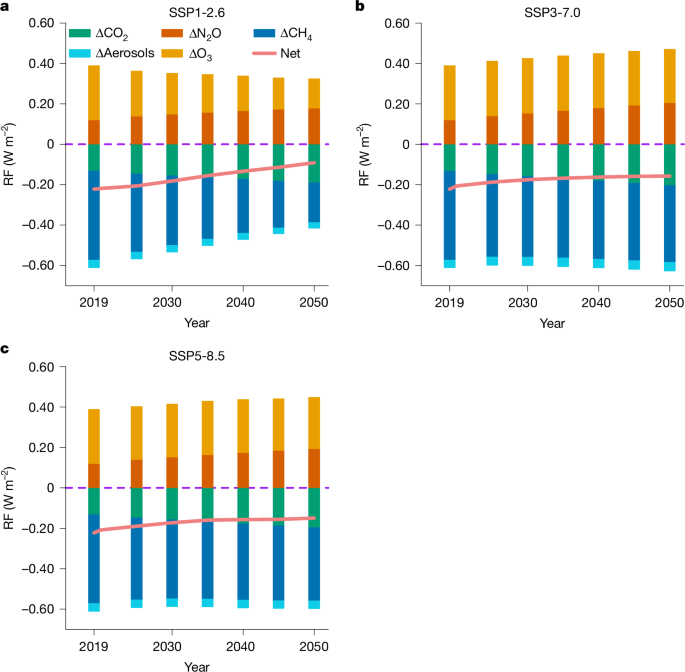
"The main purpose of Gong et al.1 is to show that anthropogenic reactive nitrogen (Nr) has a net cooling influence on climate, which has important implications for future emissions mitigation strategies. We welcome that in the accompanying Comment2, Hodnebrog et al. confirm the net cooling influence of anthropogenic Nr. However, Hodnebrog et al. argue that Gong et al. underestimate the uncertainties in individual effects, such as in aerosol, ozone (O 3) and methane (CH 4) radiative forcing (RF) from Nr emissions."
"Although we disagree that the central estimates in Hodnebrog et al. are comparable to those of Gong et al.1 (see below), we first apply their central estimates of each component to estimate the sensitivities of RF to carbon dioxide (CO 2), nitrous oxide (N 2O), CH 4 concentrations, or ammonia (NH 3) and nitrogen oxide (NOx) emissions, respectively, and reproduce the assessment of future impacts (Fig. 5 in Gong et al.1)."
Anthropogenic reactive nitrogen (Nr) produces a net cooling influence on climate with significant implications for emission mitigation strategies. Confirmation of the net cooling effect is reported alongside concerns that uncertainties in individual components — aerosols, ozone and methane radiative forcing — may be underestimated. Varied differences among component estimates do not change projected net climate effects under future scenarios, and biases and uncertainties in alternative analyses can overemphasize differences. Applying alternative central estimates to sensitivity calculations yields similar radiative forcing patterns across scenarios, with differences falling within original uncertainty ranges. Future projections require integration of dynamic feedbacks, but net-effect uncertainties remain constrained.
Read at Nature
Unable to calculate read time
Collection
[
|
...
]